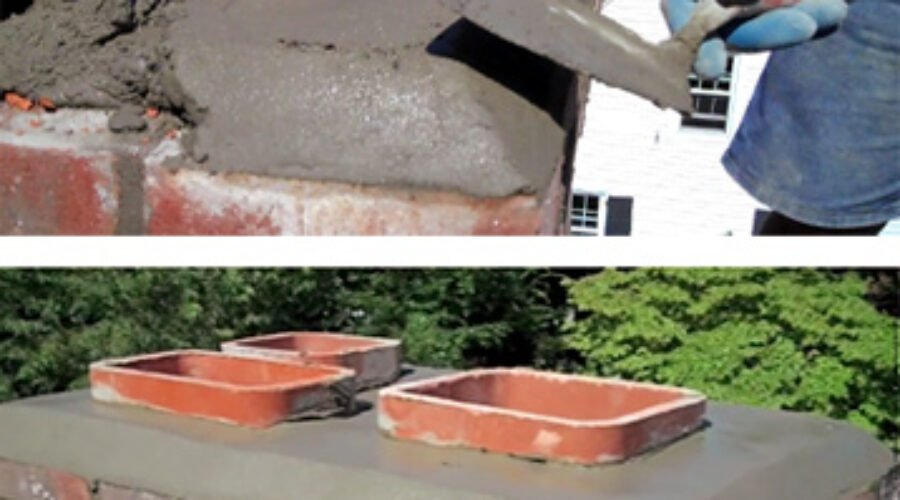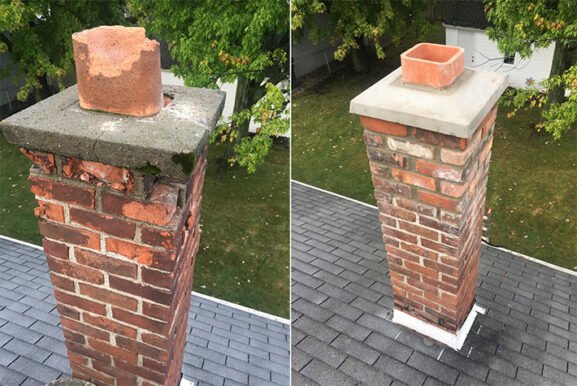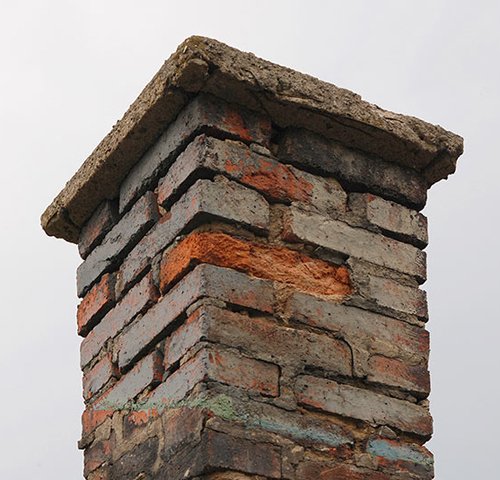Choosing the Right Cement for Chimney Repair Helps Prevent Bigger Structural Problems
Key Takeaways
- The type of cement used in chimney repairs directly affects structural strength and longevity
- Not all cement products are suitable for high-temperature or exterior conditions
- Knowing when to use refractory cement versus mortar mix can prevent costly future damage
- Routine inspection and the right materials go hand in hand for safe, lasting chimney performance
Why Chimney Cement Matters More Than You Think
Many homeowners notice cracks or flaking on their chimneys and assume any bag of cement will do the job. Unfortunately, choosing the wrong type of cement can do more harm than good. Chimneys are constantly exposed to extreme conditions: rain, snow, wind, and intense heat from fires. Using the wrong material during repairs may cause premature failure, leaks, or even structural instability. Cement is not just a filler — it acts as a protective and supportive binder that plays a key role in the health of your entire chimney system.
Understanding Different Types of Chimney Cements
Before tackling any chimney repair, it’s important to understand the different types of cement products available. Each type serves a specific function depending on where and how it’s used.
Refractory Cement
Refractory cement is made to handle extreme heat, making it ideal for areas inside the firebox, flue liner joints, or smoke chamber. It’s resistant to thermal shock, meaning it won’t crack easily under high temperatures. This makes it essential for interior chimney repairs where combustion gases are present.
Masonry Cement
This is a mixture of Portland cement and hydrated lime, designed for exterior use with bricks, blocks, and stone. It’s good for repointing chimney joints or rebuilding chimney crowns, but it isn’t designed for high-temperature conditions. When using masonry cement outdoors, make sure it’s rated for freeze-thaw resistance, especially in colder climates.
Air-Setting Mortar
Unlike cement that needs curing with moisture, air-setting mortar dries and hardens at room temperature. It’s typically used in minor surface patching but doesn’t offer the heat resistance needed for high-temperature zones.
Matching the Cement to the Chimney Component
Using the right product for each part of your chimney is key to a successful repair. Here’s how professionals typically match cement types to chimney sections:
- Flue joints or smoke chamber – Use refractory cement to ensure heat resistance and long-term stability
- Exterior mortar joints – Use masonry cement or a lime-based mortar for elasticity and weather durability
- Chimney crown patching – Consider hydraulic cement for water resistance, but only for temporary fixes
- Firebox repairs – Always go with high-temperature refractory cement to handle direct flame exposure
Skimping on the right type or grabbing general-purpose cement from a hardware store may seem cost-effective but could shorten the chimney’s lifespan dramatically.
The Role of Cement in Repointing and Crown Repair
Repointing is the process of removing and replacing deteriorated mortar between chimney bricks. This is one of the most common uses for chimney cement. If you choose a mix that’s too hard or incompatible with the original mortar, it can lead to cracking or even brick damage. Lime-based mortars are often favored in historic masonry for their flexibility and breathability.
Crown repair is another area where the cement choice is critical. Chimney crowns are prone to cracking due to water intrusion and temperature swings. For these, a flexible, waterproof mix like a specialized crown sealant or concrete with added bonding agents is often used. You can also review technical guidance from the Brick Industry Association to understand how cement choices affect brick structures over time.
Climate and Weather Influence Cement Performance
In cold regions, freeze-thaw cycles can cause traditional cement to crack or fail prematurely. That’s why it’s important to choose chimney cement that is rated for weather resistance. For example, Type N mortar may work fine in mild climates, but in areas with harsh winters, Type S or a specially formulated repair mortar may offer better durability.
Water infiltration is a major cause of chimney damage. If water gets into cracks and freezes, it expands, widening those cracks further. Cement used in chimney repairs should always include additives or be designed for low absorption and minimal shrinkage. Choosing weather-resistant materials is not just smart — it’s necessary.
Best Practices When Applying Cement for Chimney Repairs
Even the best cement won’t perform well if applied incorrectly. Here are some best practices to follow during any chimney repair job:
- Surface preparation is crucial — clean out all dust, old mortar, and loose debris
- Use bonding agents when patching over old materials to improve adhesion
- Mix cement properly according to manufacturer instructions to avoid weak spots
- Apply during the right weather — avoid freezing temperatures or direct sunlight
- Allow proper curing time to ensure full strength and weather resistance
These steps can be the difference between a repair that lasts decades and one that fails within a year.
When to Involve a Chimney Professional
While some cement repairs can be done by a skilled DIYer, others require professional inspection. Cracks in the flue liner or damage near the chimney’s base could indicate structural issues that go beyond cosmetic fixes. Professionals have the tools and expertise to determine whether your chimney needs simple patching, full repointing, or even a rebuild.
In addition, licensed chimney technicians are more likely to choose the right cement for the job and apply it in accordance with safety and building codes. A professional inspection can also identify hidden moisture intrusion or ventilation issues you might not spot on your own.
Cement Choice and Fire Safety Go Hand in Hand
Beyond structural concerns, the right cement also plays a role in fire safety. Using non-heat-resistant mortar inside flue joints or fireboxes can cause the material to fail under high temperatures, leaving dangerous gaps where toxic gases or flames can escape. Fire officials stress the importance of using rated refractory cement inside any part of the chimney exposed to fire or exhaust gases.
Whether you’re doing small touch-ups or full mortar replacement, never compromise on cement quality when fire is involved. A small shortcut can put your entire home at risk.
Long-Term Chimney Performance Starts with Smart Material Decisions
Chimney repairs may look simple, but the materials behind the repair make all the difference. Cement is not a one-size-fits-all solution. From heat-resistance to weather durability, each mix plays a unique role in keeping your chimney safe and sound. By understanding which type of cement to use and when to call in a professional, you’re investing in the long-term health and safety of your home.


